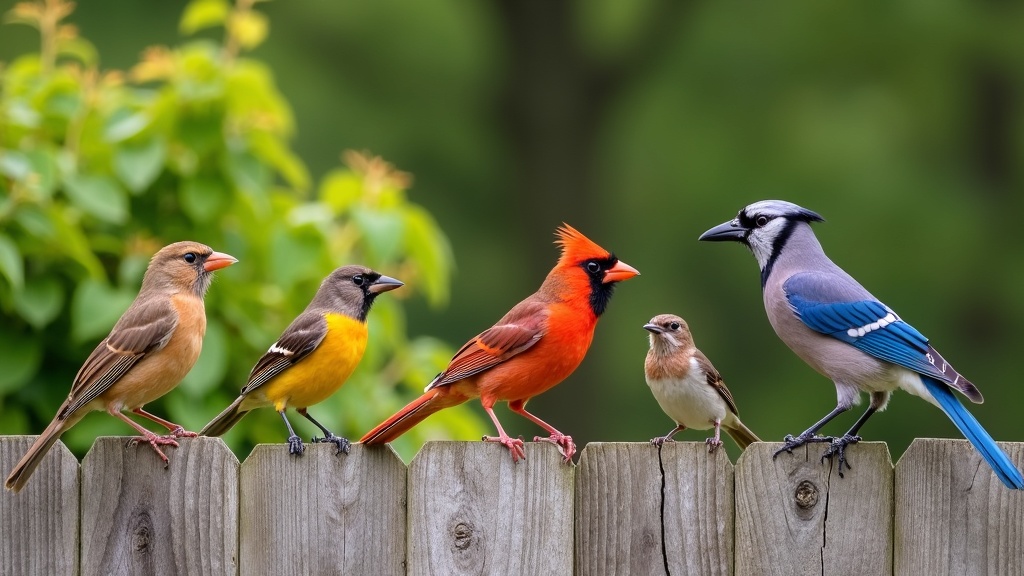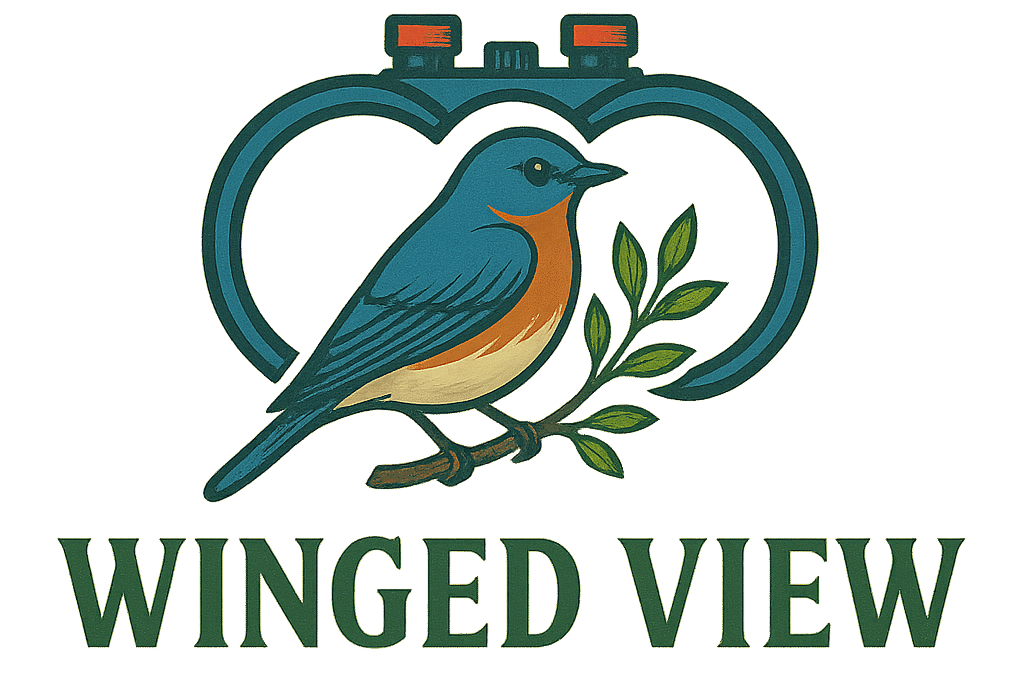Backyard birdwatching opens up a whole new world just outside your window. Watching the regular crowd that flits through your garden can offer a peaceful break from a busy day and get you more connected with nature. If you’re looking to identify the various birds you spot and turn casual watching into a fun, rewarding hobby, there are plenty of straightforward ways to start. I’ll share what’s worked for me and how you can begin recognizing common backyard birds with confidence.

Why Backyard Bird Identification Matters
Knowing which birds visit your space adds a bit of everyday adventure and also helps with conservation efforts. You become more tuned in to environmental changes and bird behaviors. Identifying birds encourages mindfulness and can even boost your mood; there’s something special about recognizing an old feathered friend who drops by daily for a snack.
Birdwatching is one of the easiest hobbies to pick up, and it doesn’t require much gear. According to the U.S. Fish and Wildlife Service, over 45 million Americans enjoy birdwatching, and most start at home. That’s proof you don’t need to travel far or have expert level skills to join in.
Even in small yards, the variety of birds can be surprising. Some species have adapted so well to city life that they thrive in urban backyards. Paying attention can turn an ordinary morning coffee into a mini nature discovery session, unveiling visitors you never noticed before.
Getting Started with Bird Identification
Before pulling out binoculars, some preparation helps set the stage. Providing food, water, and a bit of shelter will draw more birds to your yard. Once they start showing up, you can focus on spotting the traits that help you figure out who’s visiting.
Here are a few things to keep handy while you’re getting started:
- Field Guide or Bird App: Guides like the Sibley Guide or apps like Merlin Bird ID help quickly narrow down options based on region and season.
- Notebook: Jotting down observations, such as time of day, colors, or behaviors, can make remembering birds easier.
- Binoculars: A simple pair works well to bring distant birds into focus without spooking them.
Key Features to Look For
Every bird has its own set of field marks. Focusing on a few main traits helps you make solid IDs, even if you only get a quick glance:
- Size and Shape: Is the bird smaller than a robin, chunkier like a dove, or longtailed like a mockingbird?
- Color Patterns: Notice the main colors and any special markings. Think about the head, back, wings, belly, and tail. Spots, bars, or eye stripes can really help nail things down.
- Beak Shape: Finch beaks are short and thick for seeds, while insect eaters like warblers have slimmer, pointier beaks.
- Calls and Songs: Bird vocalizations are a reliable clue. Apps often feature audio samples, making them useful for comparing what you hear outside.
- Behavior: Pay attention to how birds move. Some hop, some walk, and others cling to bark or dart midair to catch bugs.
A Quick Guide to Recognizing Common Backyard Birds
There’s a group of birds that seem to pop up in almost every North American yard. Knowing these regulars makes identification less overwhelming. Here’s a look at some birds you’ll likely see, along with their most recognizable features:
- American Robin: Medium sized, graybrown with an orangered chest. Readily forages for worms on lawns and has a cheery, whistled song.
- House Sparrow: Small, round, and brown with streaky backs. Males have a gray crown and black bib; females are more plain. Found near homes and outdoor eating areas.
- Northern Cardinal: Males are bright red with a pointed crest, while females are pale brown with reddish tinges. Both have thick red beaks and a sweet, whistled call.
- Blue Jay: Larger, with bold blue and white plumage, a head crest, and loud, ringing calls. You’ll spot them raiding feeders or squabbling in the trees.
- Blackcapped Chickadee: Tiny, with a black cap and bib, white cheeks, and gray wings. Their “chick-a-dee-dee-dee” call is hard to miss.
- Mourning Dove: Plump, with soft graybrown feathers, a long pointed tail, and a gentle coo that tends to blend into the background.
- American Goldfinch: Small, with bright yellow summer plumage (males), black wings, and a bouncy flight pattern. In winter, they turn olivebrown but keep those black wings.
- Downy Woodpecker: Little woodpeckers with black and white patterns and a small patch of red on males. They swing by suet feeders and drum on tree branches, easily distinguished by their stiff, straight stance on tree trunks.
Tips for Building Your Backyard Bird List
Once you’ve got the basics down, building out a running list of your backyard visitors can be pretty satisfying. Here are steps that have worked really well for me:
- Set up bird feeders and change up food types (sunflower, thistle, suet) to attract a variety of birds.
- Keep a shallow birdbath clean and filled for drinking and bathing; adding a small bubbler or fountain draws in birds that enjoy moving water.
- Try to sit quietly for just 10 to 15 minutes at a time, especially after refilling feeders, and see who pops by.
- Use a notebook or smartphone app to track what you spot and any new species you see.
- Compare current birds with those you’ve logged already. New visitors often show up during migration seasons, so check in during spring and fall for added variety.
Common Challenges and How to Handle Them
- Birds Are Fast or Skittish: Sometimes, they zip off before you can get a close look. Try using your binoculars while sitting quietly and keep movement near feeders minimal.
- Several Birds Look Similar: Pay extra attention to details like head patterns, beak shape, or tail markings. Extra photos or sketches in your notes can make a big difference.
- Birds Only Show Up at Certain Times: Many birds are busiest at sunrise or sunset. Try checking your yard during different parts of the day to increase your chances.
Identifying Birds by Their Sound
Learning to identify birds by ear isn’t just for pros. Even picking up a couple of calls makes ID easier, especially for the quieter songbirds who stick to dense shrubs. Since many birding apps and websites offer audio clips, you can practice matching real life sounds to species during your coffee break or while sitting in the yard.
Using Technology to Make ID Easier
Several smartphone apps let you upload photos or record bird sounds, giving instant suggestions based on region and time of year. Merlin Bird ID (from the Cornell Lab of Ornithology) and eBird are especially handy, even if you’re just starting out. These tools also log your sightings and contribute to citizen science projects, which is a nice bonus and keeps you motivated to spot more species.
How Birdfriendly Backyards Attract More Variety
Planting native flowers and shrubs gives food and cover, supporting birds all year round. Try adding berry producing plants or dense evergreens to your landscape. Steering clear of pesticides keeps food sources safe for birds and their chicks, too.
- Native Plants: Offer seeds, fruits, and natural shelter for a bigger range of birds.
- Brush Piles: Give ground dwelling species a place to hide from predators and bad weather.
- No Pet Zones: If you have cats or dogs who roam outdoors, keeping them away from feeder areas helps protect birds from stress and harm, letting feathered friends eat and rest in peace.
Frequently Asked Questions
Here are some regular questions I get about identifying backyard birds:
Question: How can I tell the difference between similarlike brown birds?
Answer: Focus on size, beak shape, and head markings. Even a short tail versus a long one helps narrow things down. Snapping a quick picture and cross referencing with a field guide works well.
Question: What if I can’t get a good look at the whole bird?
Answer: Pay attention to any bold markings, song, or how the bird moves. Sometimes a single feature, like a white wing bar or the way a bird forages, can be enough to figure it out.
Question: What’s the best time to see the most birds?
Answer: Early in the morning is busiest, especially on sunny days right after sunrise. Spring and fall bring more species due to migrations and you may spot temporary visitors passing through.
Experience: What Birdwatching Has Taught Me
After a few months of backyard watching, I started to notice daily patterns and favorite spots for each bird. Chickadees became the early risers, robins loved hunting worms after rain, and nuthatches zipped down tree trunks with their own unique style. I’ve learned to listen as much as I look, and even quick check ins by the window reveal surprises; a bright goldfinch here, an unexpected woodpecker there. Getting to know these neighbors made my yard feel more lively, and now visiting friends enjoy my impromptu bird tours too.
Wrapping Up
Practicing your ID skills gets easier each week, and every new bird feels like a small win. Providing a welcoming backyard helps bring in more species and gives you the best front row seat to local wildlife. Whether you want to keep things simple or get into birdwatching as a regular hobby, having a few ID tricks up your sleeve makes the adventure a lot more fun. Happy spotting!
